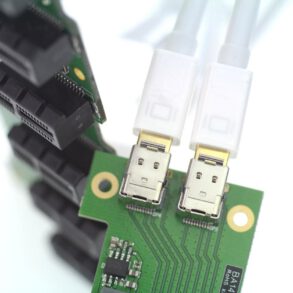Backbone part of the network is a core of the network with its high throughput capability and significant bandwidth. It is made for the ability of network to communicate with external networks (like Internet). It is a root of the network tree, that has rest of the network growing from it.
Serial Backbone
Serial backbone is formed of two or more devices that are connected in a daisy chain (linked series). It is a simplest kind of backbone. As the one can see from Figure 1, serial backbone can be made not only from switches, but also from gateways and routers.
While designing the backbone, the one should consider the limit of the devices that can be connected to the backbone in the repeating fashion. Exceeding the limit would result in the unexpected errors and data loss in the network. Serial backbone networks are not very fault tolerant and not very scalable, that make them less commonly used that the distributed backbone.
Serial backbone type network
Figure 1. Serial backbone.
Distributed Backbone
Distributed backbone uses hierarchical design of the network, where number of intermediate devices are connected to single or multiple connectivity devices. These central connectivity devices could be switches or routers and shown with purple color in Figure 2.
Simple distributed backbone type network
Figure 2. Simple distributed backbone.
This type of backbone is easily scalable since new layers of devices can be added with no troubles. Distributed backbone allows simple administration and management of the network due to its segregation. This type of network can have daisy chain linked devices for the backbone, however, designer should consider the same limitations as for the serial backbone.
Figure 3 provides a view of more complicated distributed backbone that connects multiple LANs together. LANs are interconnected with routers that form the backbone.
Figure 3. Distributed backbone that connects multiple LANs.
Overall, it is cheap, easy, and quick to implement the distributed backbone network.
Collapsed backbone
This type of backbone uses single, powerful router as the central connection point for multiple subnetworks. As Figure 4 shows, the central device is the highest level of the backbone. It should have powerful computational power in order to manage big traffic coming in. This is highly risky, since if the central device fails, the whole network would be down. However, this type of backbone is useful for the one who wants to interconnect two types of subnetworks, with ability to manage and troubleshoot them.
Collapsed backbone network




